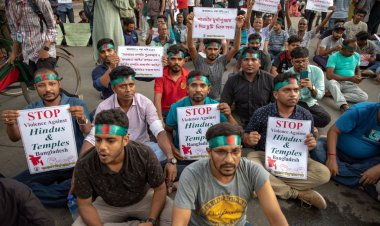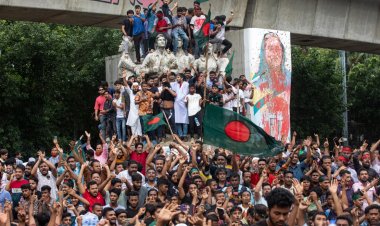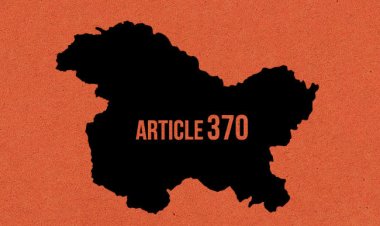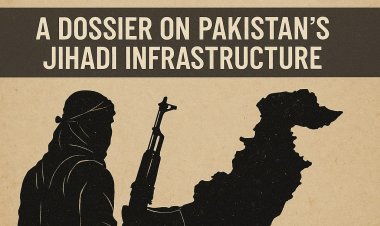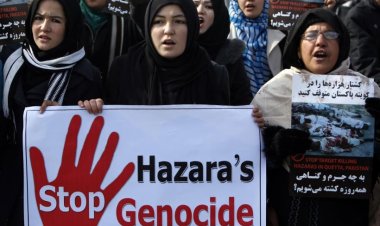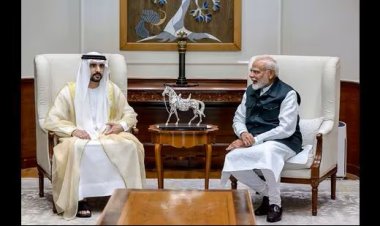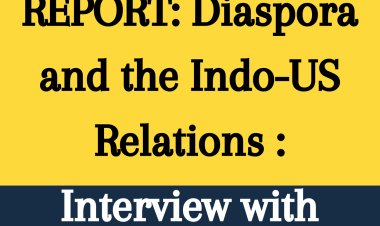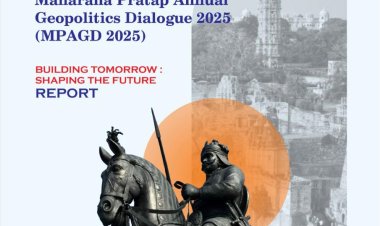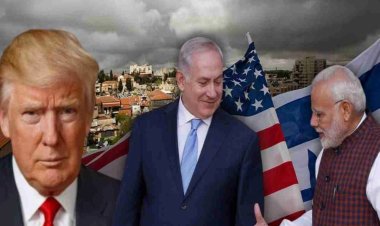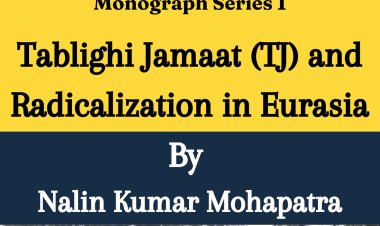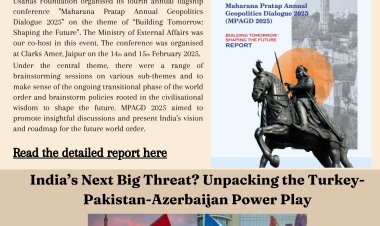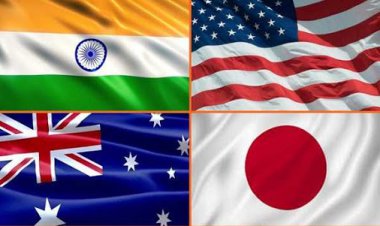War Clouds Over South Asia: The India-Pakistan Question

Analysis
By Dr. Abhinav Pandya
After the brutal murder of 28 Hindu tourists in Pahalgam in the conflict-ridden Jammu and Kashmir on 22nd April by terrorists of The Resistance Force (TRF), a proxy outfit of Pakistan-sponsored and based Lashkar-e-Taiba (LeT), the entire India is enraged and seething with anger. The initial state of shock is gradually transforming into public outbursts against Modi’s Hindu nationalist government for the intelligence failure and fervent demands for massive retaliation. In his public address in Bihar, PM Modi said, “I say to the whole world. India will identify, track, and punish every terrorist and their backers. We will pursue them to the ends of the Earth…….India's spirit will never be broken by terrorism. Terrorism will not go unpunished. Every effort will be made to ensure that justice is done. The entire nation is firm in this resolve.” He has vowed 'unimaginable punishment' to Pakistan. Generally, PM Modi avoids speaking in English; however, he chose to communicate in English to express his thoughts and determination to inflict punishment on Pakistan for the terrorist attack, as if addressing the world leader of the impending retaliation.
Modi Under Pressure to Retaliate
After the Pahalgam incident, Pakistan did not issue a statement. Lashkar-e-Taiba’s proxy, TRF (The Resistance Force), backtracked from its earlier ownership of the attack, saying it was cyber sabotage. However, the government of India immediately acted and declared a slew of measures, including putting the Indus Waters Treaty (1960) in abeyance and expelling Pakistani diplomats, citizens, and tourists from India. Following PM Modi’s speech, India’s jingoistic and hyper nationalistic media houses and their anchors have launched a media war against Pakistan. Their frenzied war mongering and rhetoric have added to the fire of popular expectations. The Indian masses, seething with rage and anger, glued to their TV sets, find their sentiments echoed by the media houses. Further, from Modi’s Hindu nationalist BJP government, they expect massive retaliation and stringent action against Pakistan and Islamists. Modi-led BJP government rides on the support of Hindu nationalists and promises them merciless action against terrorists. Hence, there is a massive pressure on the government to act.
Adding further to Modi’s difficulties is the growing discontentment among his core Hindu constituency. BJP’s core Hindu constituency feels that the BJP has not done anything substantial for Hindus in the last 12 years. The BJP government failed to implement the CAA/NRC Act, purported to disenfranchise the illegal immigrants, mostly Bangladeshi Muslims. Abrogating Article 370 turned out to be nothing more than a political stunt with no follow-up action against the radical Islamist mindset deeply rooted in Kashmiri society. Pakistan changed its tactics and continued with brutal terror attacks. On the other hand, Delhi, in order to impress the bleeding-heart liberal European countries, tried to promote development and tourism in Kashmir, pumping in huge money, with no simultaneous action against the terror ecosystem. The BJP government failed to pass the population control law, deemed necessary by most Hindus to check the demographic jihad by Islamists. Further, there was a spate of blasphemy killings of Hindus in many Indian states, including the BJP-ruled ones; however, nothing concrete was done except for a few measures that were high on optics but low on substance. In West Bengal, Islamic extremists have established a widespread control over society, politics, and administration, resulting in communal riots and the killing of Hindus, under the tutelage of the anti-Modi Chief Minister Mamta Banerjee, known for her pro-Islamist policies. The law-and-order condition in the state was a perfect case for imposing the president’s rule, i.e., bringing the state under the direct control of the central government, which would have enabled Modi to take firm action against the Islamists; however, the BJP failed to do that. There were demonstrable security and intelligence lapses even in the recent Pahalgam attack. J&K’s political and police leadership faced allegations of corruption and nepotism. As a result, an overwhelming segment of Modi supporters think that the BJP uses Hindu nationalism and high-pitch security rhetoric only to win elections.
The growing resentment against the BJP and decline in Modi’s popularity were visible in the results of the 2024 national election, in which the BJP barely managed to form a coalition government with unwilling partners. Within the BJP and RSS circles, several rumors exist about the leadership transition and finding a successor to Modi. Hawkish Yogi Adityanath is seen as an able successor. In 2026, Modi will be 75 which gives the RSS an alibi to replace Modi with their favourites because according to the BJP’s constitution leaders must retire after the age of 75. However, if Modi is not replaced by a charismatic and strong successor in these critical times when the global geopolitics is in the flux and India is also going through massive internal social and economic churning, there will be disruptions and BJP might even lose elections in 2029. Amidst all these developments, the Modi government is under tremendous pressure to retaliate in a clearly visible manner to neutralise Pakistan’s terror ecosystem effectively.
Now, what can India do when it vows an unimaginable punishment?
Besides the perfunctory steps like expelling diplomats and Pakistani citizens, India for the first time has decided to put the Indus Waters Treaty (1960) in abeyance. Indus Waters Treaty was signed in 1960 to divide the waters of the Indus River between India and Pakistan. Pakistan fears that India being an upper riparian state can block the water flow to Pakistan crucial to its agriculture. So far India has never weaponised the river systems. With the rising tensions between the two countries, Pakistan’s insecurities are intensifying. However, it will be difficult for India to stop the water flow because India does not have sufficient dams, reservoirs, and canal systems to divert the water to agricultural lands and water systems in India. Hence at this stage India cannot stop the water flow for more than a few days at the maximum, and that too will cost India in terms of the loss of hydroelectricity production for that period. Further, it is challenging to build canals in the hilly terrain of Kashmir. Lastly, the under-sluice gates of the dams have been effectively blocked by Pakistan which makes it impossible for India to create an artificial flood-like situation by unregulated release of water in a war-like situation. Also, after committing to an unimaginable punishment, blocking the water flow is low on optics. It will not quell the public anger and will not satisfy their expectations.
The other options include conducting a surgical ground strike inside Pakistan-Occupied Kashmir and an air raid on the terrorist training camps. However, it is worth mentioning here that the coercive tactics have never deterred Pakistan. In 2001, after the parliament attack by Jaish-e-Mohammad, India built pressure on Pakistan by mobilising its massive army on the border. However, the coercion did not deter Pakistan. Instead, after acquiring nuclear capabilities, Islamabad has deftly used nuclear blackmail to inflict damage on India by strengthening proxy terror groups and orchestrating lethal fidayeen attacks. After the 26/11 attacks of Mumbai by LeT, killing 166 people, including foreigners, India did not retaliate, fearing Pakistan’s nuclear capabilities.
In 2016, India went for a surgical strike after the Uri Fidayeen attack. It was the first surgical strike that received massive media attention. Before that, Indian security forces occasionally conducted unpublicized surgical strikes. However, the Uri surgical strike did not produce the expected results. Pakistan continued with more lethal and brutal fidayeen attacks between 2016 and 2019, finally culminating in the deadly Pulwama fidayeen attack, killing 40 Indian soldiers. In retaliation, India crossed the Pakistani airspace and bombed the Jaish headquarters in Balakot. However, despite India's claims of killing 400 terrorists, uncertainties prevail about the actual number of deaths, as India could not produce any concrete evidence. Indian strategic experts like Praveen Swami suggest that the bombs missed the target. However, the air strikes called off Pakistan’s nuclear bluff and established a new red line. India signalled that it would not take the terror attacks lying down and could attack deep inside Pakistani territory. However, the air raids did not deter Pakistan.
In August 2019, India abrogated Article 370 of its constitution that conferred special status to Jammu and Kashmir (J&K), in its mission to crush terrorism root and branch. Following that, the government imposed a rigorous security and communication lockdown in J&K. However, the ISI masterminds changed their terror tactics and continued sending jihadists. They created new terror groups with secular names like The Resistance Force (TRF) and People’s Anti-Fascist Force (PAFF). These groups were proxies of the two main Pakistani terror outfits, i.e., Lashkar-e-Taiba (LeT) and Jaish-e-Muhammad (JeM). Changing the communication tactics, the post-370 jihadists remained radio silent until they infiltrated in large numbers, consolidated and acquired ultra sets for communication, which remain immune to interception. The encounters with terrorists in the last two to three years are more militarised. In many cases, there have been casualties among the members of India’s special forces. Terrorists have attacked non-local Hindu labourers and businessmen to signal that outsiders are not welcome. In an interesting twist, post-370 terrorists have shown more audacity in the sense that they have expanded terror operations beyond Kashmir valley, in the predominantly Hindu Jammu region. In June 2024, terrorists attacked a bus carrying Hindu pilgrims to the Vaishnodevi shrine in the Reasi district of the Jammu region, suggesting. Besides, terrorist cadres of PAFF have mainly infiltrated from the Kauthua district of the Jammu region and attacked security forces and civilians there. These attacks indicate that they are spreading into the interior areas of the Jammu region, and secondly, they are targeting Hindus, giving an overt religious angle to their operations. In the recent Pahalgam attack, also, Hindus were killed after confirming their religious identity. Such a strategy is aimed at creating communal tensions across the country, where an already fertile environment for widespread communal violence prevails due to the highly polarised communal landscape of India.
Having discussed the futility of India’s surgical strikes and air raids, it can be reasonably argued that any such action in the future will not deter Pakistan. Also, it may invite a counter-attack from Pakistan, leading to further embarrassment for India, if Pakistan downs India’s fighter jets and captures its pilots. Further, when Modi commits an unimaginable punishment in a frenzied hyper nationalistic social milieu with the 24/7 news channels baying for war, the people expect him to win back Pakistan-occupied Kashmir, eliminating Pakistan-based terror masterminds like Masood Azhar and Hafiz Saed, and top-level military brass of Pakistan, destroy the Karachi or Gwadar port in a naval attack, expand the Chicken-neck corridor, strategically important narrow passage that connects the Indian mainland to its North-Eastern states, by capturing the Bangladeshi territory or creating unbearable problems for Pakistan in Baluchistan ultimate leading to its independence.
But can India achieve this feat? Discussing this question in detail is beyond the scope of this article. However, if New Delhi embarks on such an adventure, it is likely to end up in a full-scale war with Pakistan. Pakistan is a formidable adversary. Even if India limits its response to a calibrated surgical strike at a moderate scale or an air raid on a terror training camp in PoK or the Pakistani mainland, Islamabad will retaliate because the Pakistan Army is already facing a severe legitimacy crisis in Pakistan because of the Baloch attacks and Tahreek-e-Taliban Pakistan attacks. If retaliation leads to embarrassment for India, it will be challenging to prevent escalation. India has significant limitations in the air domain. If Pakistan activates its proxy assets in India to conduct terror attacks on the military convoys and supplies, and organise communal riots, India’s capacity, will, and resources will be overstretched and challenged. Also, if China, Turkey, and Bangladesh support Pakistan, India’s hurdles will be multifold.
If India does not react or conduct a small-scale operation, Modi and the BJP will lose credibility. India is confused between the devil and the deep sea.
Disclaimer: This paper is the author's individual scholastic contribution and does not necessarily reflect the organization's viewpoint.

